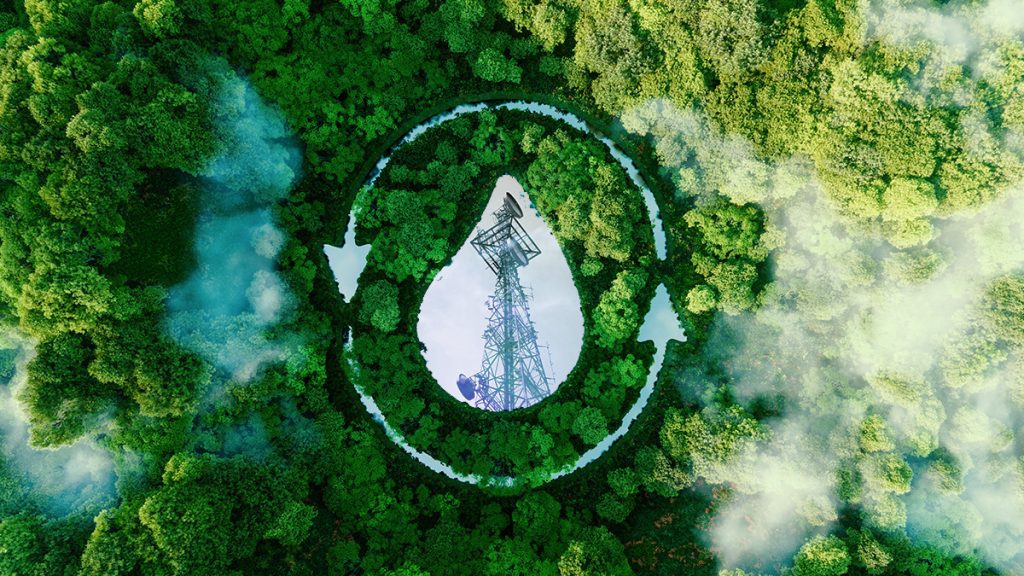
The fourth industrial revolution (4IR) has brought new intelligent solutions for water crisis management. From Big Data to Artificial Intelligence (AI), these innovations assist in detecting and anticipating ecosystem changes and natural disasters and assessing water wastage.
Technology and Water Crisis Management
Technology lends a helping hand to every sector it has been introduced to, and water crisis management is no exception.
IoT
Aging and failing water infrastructure contribute to water wastage through water-main ruptures and pipe corrosion. The longer the infrastructure is left without maintenance, the more it deteriorates and the more significant the loss of precious resources. Modern digital technology, primarily data-driven technology, has proven helpful in managing the water crisis. Utility managers can use the Internet of things (IoT), Geographic Information Systems (GIS), Business intelligence (BI), and real-time data to implement a management plan for water distribution systems. The goal here is to monitor and maintain overall systems.
- IoT: Utility managers continuously monitor pipes for leakages.
- Pressure monitoring and management: Modern pressure sensors identify problems at the source by detecting transient pressure events, thus, reducing water loss while increasing the life expectancy of pipes.
Big Data
Mitigating climate change is key to a better future. Big Data technology detects ecosystem changes and forecasts natural tragedies. Big Data can contribute to the mission through several means:
- Web Scraping: It quantifies the market impact of sustainable products.
- Social Media Scraping: It goes through millions of comments scouting sustainable products new to the market.
- Sensors: Data collection is a significant player in prevention. Machine Learning (ML) combines the acquired and historical data to develop rough estimates and predictions.
- Mobile Positioning Data: This data shows where people aggregate so the industry can target their industry adequately to serve everyone.
- Many more.
Artificial intelligence
In their Review on ML, AI, and Smart Technology in Water Treatment and Monitoring, the researchers investigated the use of 4IR technologies for water crisis management. They have concluded, “ML models and AI methods have adequately optimized, predicted, modeled, and automated some of the most critical applications in water-based industries/operations, including that of water- and wastewater treatment plants, natural systems, and water-based agriculture” (Lowe et al.).
Other than handling water wastage, AI can:
- Reduce water pollutants
- Simplify water management
- Optimize irrigation systems
South Africa and Its Water Crisis Management
Unfortunately, South Africa may not be able to meet its water needs in the next couple of years: 37 percent of the water supply is wasted in pipe leaks and bursts. A quarter of the population is left with no access to clean water. The main issue contributing to water scarcity in South Africa lies within the infrastructure. However, rebuilding it from scratch is not the answer to water management in South Africa; instead, they should salvage the remains and go from there.
How Did It Get This Bad?
The water crisis management issue is rooted in climate change, precisely unpredictable and increasingly severe climate events (i.e., floods). The coal-based energy sector is not exactly helping the situation either.
- Recurring droughts
- Aging infrastructure
- Poor maintenance
- Water misuse
What Did They Do About the Water Crisi Management problem?
Despite the setbacks brought on by the conflict between the public and private sectors, South Africa has started work on disruptive technologies to mend what’s broken.
Digital Twins
This concept relies on Building Information Modelling (BIM). It allows city planners and engineers to build replicas (a.k.a Digital Twins) of the water network. The experts then plan scenarios and assess the best way to fix them in a virtual environment before implementing them in the real world.
Take Aquasuite, for example. It’s an AI-powered solution that provides decision-makers with actionable insight into their drinking water and wastewater infrastructure. In addition, it optimizes asset performance. The game plan for this technology is to prioritize projects and allocate resources to the most significant issues.
Smart Meters
Smart meters for water crisis management have been game changers. These systems revolve around autonomous features and high-end telematics. Subsequently, users view consumption patterns in monetary value and detect anomalies in the water distribution network. As a result, the employees notice the issues and quickly repair them, directly saving water resources.
IoT
Smart Water Monitoring and Management Systems combine sensors, big data, and AI technologies. It has proven incredibly useful to water utility operators, farmers, and companies as it can measure, monitor, and control water distribution networks. Furthermore, the experts can monitor the quality of the distributed water. Consequently, the reports show a decrease in waste and consumption, dramatically improving the preservation of Earth’s resources.
Wrap-up
Climate change has affected the world, some parts more than others. Our lack of ecological knowledge and planning has resulted in droughts, floods, unusual temperatures, etc. Countries known for nature’s display of its four seasons are witnessing one season melting into another to the point of confusion. As a result of this shift in living conditions, water is becoming a scarce resource. Poor water crisis management in certain parts of the world has escalated the situation. Unfortunately, water scarcity in South Africa has struck the country so hard that they have decided to shut the taps in people’s homes in certain areas to control water misuse.
Nevertheless, the experts handling water management in South Africa have agreed to integrate the 4IR’s most significant technologies to mitigate and navigate the storm. Using Big Data, AI, and IoT, engineers, and city planners have gotten a solid grip on a viable plan. The priority is fixing the aging infrastructure and the poor maintenance.
Inside Telecom provides you with an extensive list of content covering all aspects of the tech industry. Keep an eye on our Tech sections to stay informed and up-to-date with our daily articles.